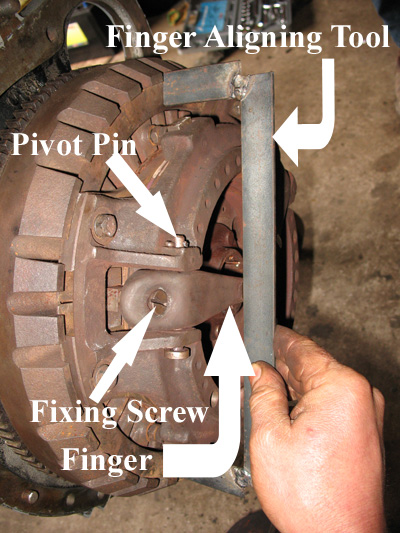To adjust tractor clutch, locate adjustment nut on the clutch linkage and turn it accordingly. Ensure proper engagement.
Adjusting the clutch on a tractor is an essential maintenance task that ensures proper performance and prolongs the lifespan of the machinery. Proper adjustment of the clutch helps in smooth operation and prevents excessive wear and tear on the equipment.
Through this simple procedure, tractor owners can optimize the efficiency of the clutch system, ensuring seamless operation during fieldwork or other tasks. By following the manufacturer’s guidelines and making necessary adjustments, tractor owners can maintain their equipment in top condition for years to come.

Credit: m.youtube.com
Preparation
- Gather the necessary tools such as pliers, wrenches, and a service manual.
- Ensure safety measures by wearing protective gear and disconnecting the tractor’s battery.
Credit: forums.yesterdaystractors.com
Adjusting The Clutch
To adjust the tractor clutch, first position the tractor properly. Locate the clutch release mechanism under the tractor. Next, adjust the clutch pedal freeplay according to the manufacturer’s specifications. Finally, test the clutch engagement to ensure it is functioning correctly.

Credit: vintagetractorengineer.com
Frequently Asked Questions For How To Adjust Tractor Clutch
How Do You Adjust A Tractor Clutch?
To adjust a tractor clutch, start by locating the adjustment rod near the clutch pedal. Loosen the locknut on the rod and turn the adjustment bolt clockwise or counterclockwise to achieve the desired clutch engagement point. Tighten the locknut once the adjustment is complete.
Why Is It Important To Adjust Tractor Clutch?
Adjusting the tractor clutch is essential to ensure smooth gear shifting, prevent premature clutch wear, and maintain proper power transmission. Properly adjusted clutches provide better control and reduce the risk of stalling the tractor.
What Are The Signs Of A Clutch Needing Adjustment In A Tractor?
Signs of a tractor clutch needing adjustment include difficulty shifting gears, a slipping clutch pedal, or an engine that revs excessively when engaging the clutch. These signs indicate that the clutch is not properly engaging or disengaging, which requires adjustment.
Conclusion
Understanding how to adjust your tractor clutch is crucial for optimal performance and longevity. By following the steps outlined in this guide, you can ensure smooth operation and prevent unnecessary wear and tear on your tractor. Regular maintenance and adjustments will ultimately save you time and money in the long run.
{ “@context”: “https://schema.org”, “@type”: “FAQPage”, “mainEntity”: [ { “@type”: “Question”, “name”: “How do you adjust a tractor clutch?”, “acceptedAnswer”: { “@type”: “Answer”, “text”: “To adjust a tractor clutch, start by locating the adjustment rod near the clutch pedal. Loosen the locknut on the rod and turn the adjustment bolt clockwise or counterclockwise to achieve the desired clutch engagement point. Tighten the locknut once the adjustment is complete.” } } , { “@type”: “Question”, “name”: “Why is it important to adjust tractor clutch?”, “acceptedAnswer”: { “@type”: “Answer”, “text”: “Adjusting the tractor clutch is essential to ensure smooth gear shifting, prevent premature clutch wear, and maintain proper power transmission. Properly adjusted clutches provide better control and reduce the risk of stalling the tractor.” } } , { “@type”: “Question”, “name”: “What are the signs of a clutch needing adjustment in a tractor?”, “acceptedAnswer”: { “@type”: “Answer”, “text”: “Signs of a tractor clutch needing adjustment include difficulty shifting gears, a slipping clutch pedal, or an engine that revs excessively when engaging the clutch. These signs indicate that the clutch is not properly engaging or disengaging, which requires adjustment.” } } ] }
